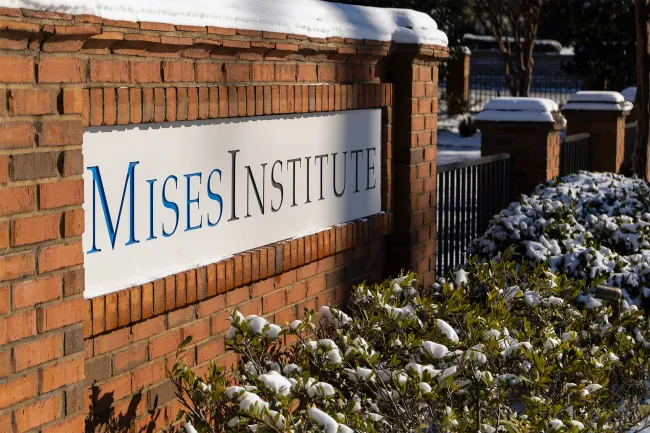Senator Mike Lee has been making waves recently with his support of new potential legislation that would mandate sale of a small amount of land which is currently owned and managed by the federal government. The idea behind the proposal is to free up space for housing development in states where the federal government currently owns large shares of the land. In Senator Lee’s words, “...turning federal liabilities into taxpayer value.”
The appeals made in support of this proposed legislation correctly identify a number of key issues. For one, it is obviously true that any federally-owned land which currently serves no productive purpose would be transformed from a liability into an economic asset if its sale were to result in new productivity. It is also true that the housing market in the Western part of the country could benefit from freeing up some of the government-owned land for development. Utah—Senator Lee’s home state—has seen a continual and substantial increase in housing prices over several decades. There is little doubt that this rise in price is to some degree a result of the fact that roughly 68 percent of Utah’s land is owned by the federal government, preventing its utilization in the meeting of demand for housing in the state.
If one were to consider only these two factors—the current under-utilization of some portion of federally-controlled land together with the immediately apparent possible use case for that same land—putting the land up for sale and allowing the unseen hand of the free market to figure out how best to use it seems like a perfect solution. But the problem with the proposal is not in the idea that in a free market the voluntary exchange of this land would lead it to its most useful employment. The problem is in the implicit assertion that our market is, in fact, a free market.
In the first place, the proposed legislation specifies that nomination of public lands to be sold must include explanation of how the subsequent development of the land “...would address local housing needs (including housing supply and affordability) or any associated infrastructure to support local housing needs.” This explicit, baked-in preference that the land be sold for one particular usage above all others causes the proposal itself to stand contrary to one of the most fundamental axioms of free market theory: that it is not the purpose of an economist or central planner to dictate how resources may be employed or allocated. For this reason, even outside of any consideration of whether or not our economy is free enough for free market principles to apply reliably, this proposal cannot rely on appeals to free market thinking without inherently contradicting itself. A proposal that truly grounded itself in deference to the market would make no such demands.
But, more importantly, the implicit assertion that we live in a free enough market that this exchange would occur as described is naive at best, but more likely outright manipulative. The evidence to the contrary of that assertion is enough to render it absurd on its face. First, the seller in this transaction is the federal government, whose ownership of the land is established by law and force rather than by purchase. If the idea is to let the market guide the land to its optimal usage, this design is immediately upset by the fact that the role of prices as a signal to buyers in their consideration of the land’s usefulness or desirability will be muddied due to the anti-competitive nature of its current owner.
Second, given that the sale of public lands under this legislation would be primarily for the purpose of developing housing, what can actually be done with the land once it is acquired is heavily limited. Housing development must conform with zoning ordinances and code regulations set by the government. The regulatory burden imposed by development restrictions are a significant impediment to innovative use of the land itself. Any so-called “sale” of public lands would simply be a shift from the land being publicly owned and publicly managed to the same land being privately owned and still essentially publicly managed. This is an incomplete transfer of stewardship and severely limits the land’s full utilization as a capital good.
Third is the fact that all those same regulations act additionally as a huge barrier to entry into land development. The economic cost of entering into that market—artificially amplified by government regulations—favors suppliers who are already established in the space or who have significant enough capital that the barriers to entry are easily crossed. It shuts out an indeterminate number of people who would otherwise be willing and able to enter the market as suppliers, reducing the number of ideas and experiences that could otherwise produce innovation in the space. This further narrows the already vanishingly-small number of actual uses that could be found for the land, and by extension, limits the chances of the land becoming efficiently utilized.
Speaking of barriers to entry and the large corporations that benefit from them, fourth is the propagation of business models that rely on the anti-competitive nature of the housing market. For a number of years now, a few huge corporations have been buying up a significant share of available housing, to then rent that housing out. These corporations are able to take advantage of high housing costs—a symptom of the anti-competitive market—to price out prospective homeowners and expand their share of available housing. With the median age of first-time homebuyers hitting a record 38 years old this year, it’s hard not to notice the effects this unnecessarily restrictive and increasingly megacorporation-dominated market is having on the average consumer.
In a genuinely competitive housing market, in which suppliers could enter more easily and innovate more freely, it’s more than likely that this business model of mass-scale renting would either be unsustainable or would at least not act to displace typical home ownership, instead only catering to those whose preference is to rent rather than own their living space. But that is not the market we know. If public lands are sold for housing development in the current market, these corporate interests stand every chance of being the main beneficiaries thanks to the advantages they enjoy in the market as it really is. And, if they do win big on this deal, that only serves to make their advantage even bigger moving forward. Unfortunately, due to the prevalence of the practice of crony capitalism, it is not even possible to be sure yet that this is not the purpose of the proposed legislation in the first place.
In a free market, selling publicly-owned lands is easily the best option. Hopefully we can see ourselves to a future where we can experience a market as free as that. But for the time being, and considering this proposed legislation as it stands now, it may be for the best that the land continues to sit there and do nothing.


